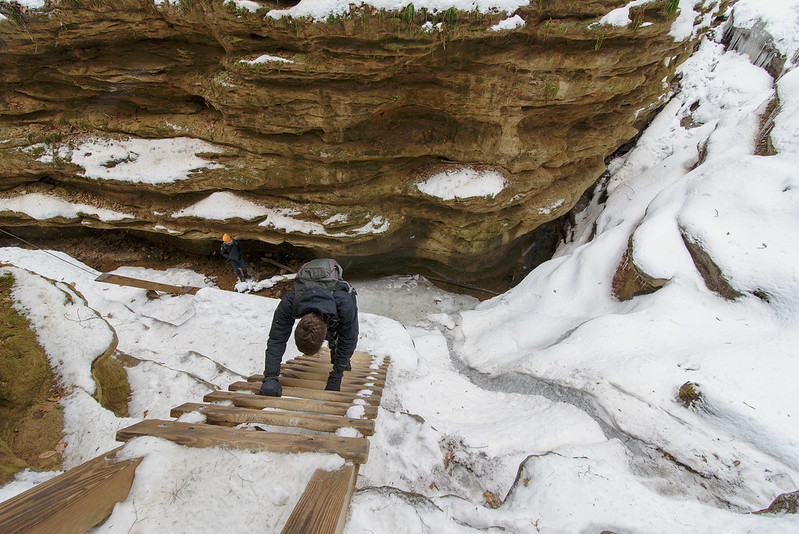
It's been an unusually warm and dry winter so far, and this is evident when visiting the Indiana Dunes National Park. One way to see we're lacking a bit in moisture is the level of this interdunal pond; it's quite low. Usually, the pond extends to the taller grasses by the foot of the surrounding dunes, but now, only a fraction of the water is in place. This isn't extemely unusual, the water levels often fluctuate, but I'm so used to seeing this pond larger.
An interdunal pond is a small body of water that forms between dunes. There is really no escape for the water that ddrains into this area, other than evaporation or absorption, so it collects into a pond. These type of ponds are havens for all sorts of animal life including birds, frogs, turtles, lizards, insects, and small mammals. The dunes can get quite dry in the summer months, and these interdunal ponds can provide support for these creatures. Of course, this particular dune is just a few hundred feet from Lake Michigan, but some of these small animals will never travel that far.

As with so many other views in this national park, this view looks as if it comes from a totally different region, something more often found in the western United States. The conifer trees here around this pond, and throughout the park mark the farthest southern reach of Jack Pine in the country. These glacier leftovers were able to remain behind when most others died off due to the change in climate after the last ice age thousands of years ago. The Indiana Dunes National Park boasts the fourth most diverse variety of plants of any US National Park. A total of 1130 native species of flowering plants call this area home - and you thought the Indiana Dunes National Park was just a beach with hills.

This photo better illustrates the location of this interdunal pond, it is completely surrounded by dunes. It's a shame one can't explore all the sides of this pond, but I imagine venturing around this pond could disturb quite a few living things that rely on this unique environment for their survival.

















































